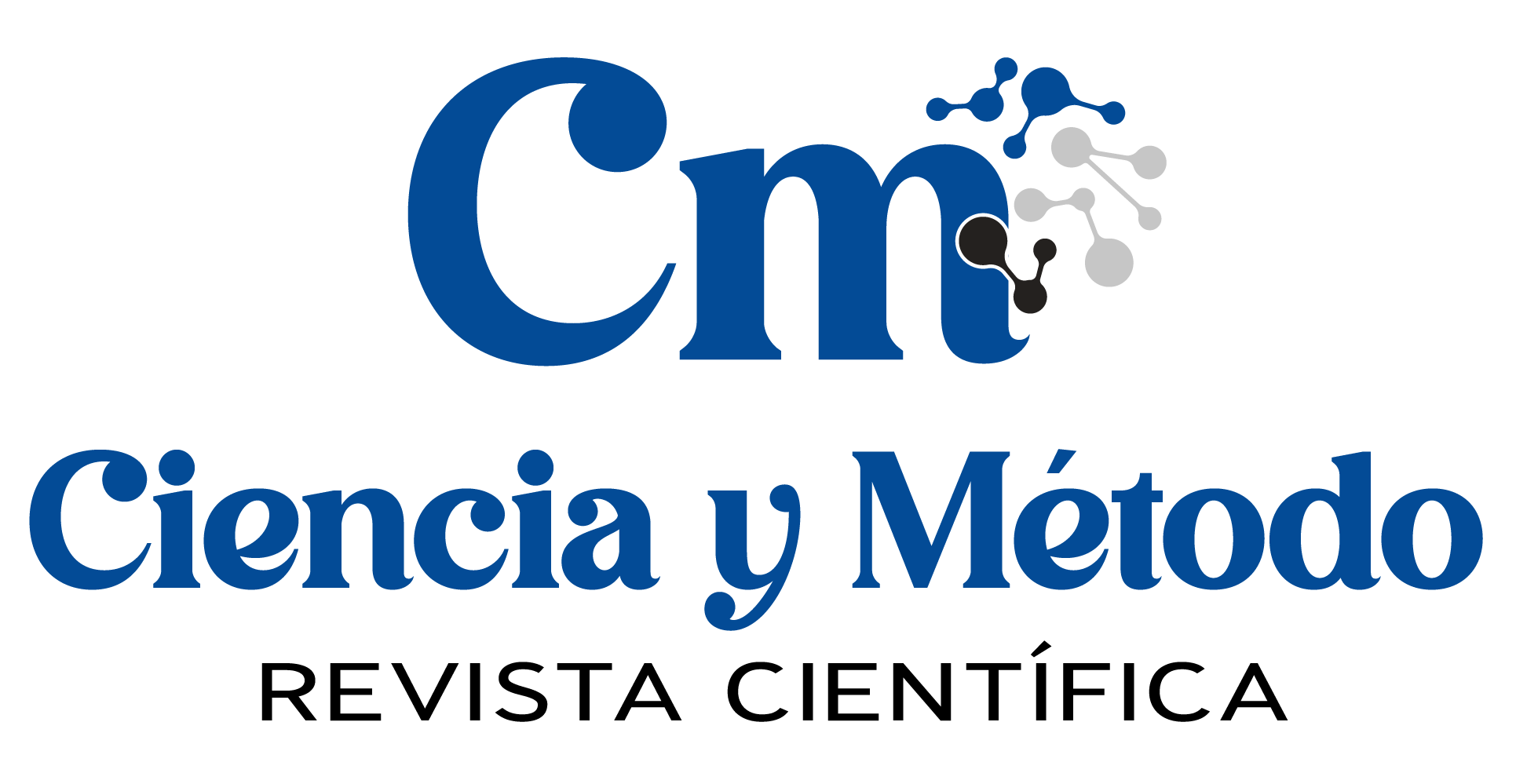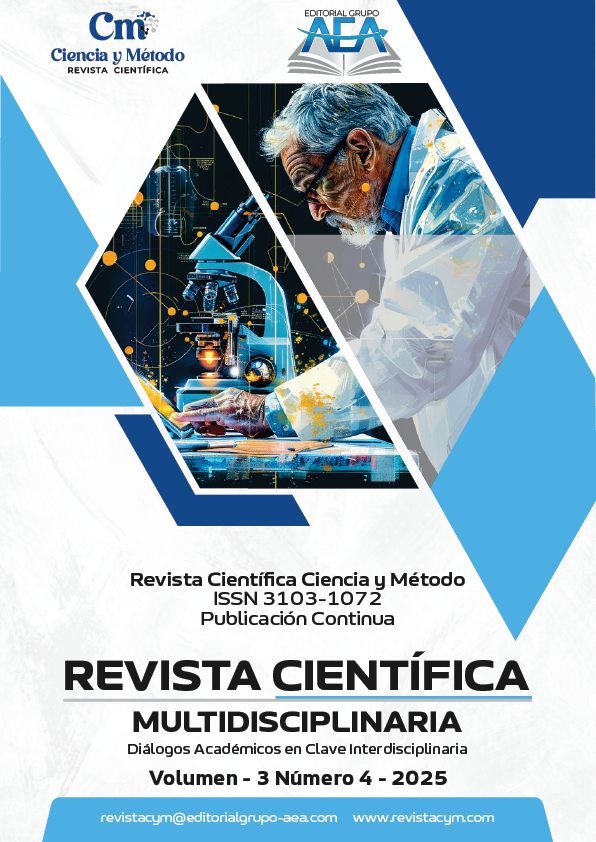Design of a training system for occupational risk prevention in the construction sector for micro-enterprises in Ecuador
Main Article Content
Abstract
The objective of this study was to design a training system for occupational risk prevention in micro-enterprises in the construction sector in Ecuador. The research was conducted using a mixed-method approach, integrating qualitative and quantitative techniques, based on interviews, surveys, and direct observation applied in ten micro-enterprises in the city of Quevedo. The results revealed the significant presence of chemical, biological, and mechanical risks, as well as a limited preventive culture and poor technical training in occupational safety. A significant negative correlation was identified between the level of training and the perception of risks (r = -0.783), which shows that training contributes to reducing exposure to occupational hazards. Based on the diagnosis, a training plan was designed, structured in four modules, which address basic regulations, risk identification, the proper use of PPE, and the reporting of unsafe conditions. The proposal seeks to strengthen the culture of prevention, reduce accidents, and ensure regulatory compliance in highly vulnerable work environments. The study provides a replicable and contextualized tool that responds to an urgent need in the sector.
Downloads
Article Details
Section

This work is licensed under a Creative Commons Attribution-NonCommercial 4.0 International License.
How to Cite
References
Babbie, E. R. (2020). The Practice of Social Research (15th ed.). Cengage Learning.
Chiavenato, I. (2019). Gestión del talento humano. McGraw-Hill Education.
Creswell, J. W., & Plano Clark, V. L. (2018). Designing and Conducting Mixed Methods Research (3rd ed.). SAGE Publications.
Hernández-Sampieri, R., Mendoza Torres, C. P., & Baptista Lucio, P. (2021). Metodología de la investigación: Las rutas cuantitativa, cualitativa y mixta (7.ª ed.). McGraw-Hill Education.
Hoffmann-Jaramillo, K., Flores-Murillo, C. R., & Vallejo López, A. B. (2023). Seguridad e higiene en el trabajo una visión holista en el nuevo siglo. Editorial Grupo AEA. https://doi.org/10.55813/egaea.l.2022.55 DOI: https://doi.org/10.55813/egaea.l.2022.55
Instituto Ecuatoriano de Seguridad Social (IESS). (2025). Boletín estadístico de siniestralidad laboral 2024. Quito, Ecuador.
International Organization for Standardization. (2018). ISO 45001:2018 – Occupational health and safety management systems — Requirements with guidance for use. ISO. https://www.iso.org/standard/63787.html
Jiménez. J. C., Cabrera Armijos, R. A., & Figuera Ávila, P. A. (2024). Percepción de los Factores de Riesgos en los Trabajadores de la Construcción. CONECTIVIDAD, 5(4), 21–32. https://doi.org/10.37431/conectividad.v5i4.199 DOI: https://doi.org/10.37431/conectividad.v5i4.199
Lingard, H., Cooke, T., & Blismas, N. (2017). Do perceptions of supervisors’ safety responses mediate the relationship between perceptions of the organizational safety climate and incident rates in the construction supply chain?. Journal of Construction Engineering and Management, 138(2). https://doi.org/10.1061/(ASCE)CO.1943-7862.0000372 DOI: https://doi.org/10.1061/(ASCE)CO.1943-7862.0000372
López Pérez, P. J. (2021). Determinación de los factores que perjudican el clima laboral en el sector de las Pymes, Cantón la Concordia. Journal of Economic and Social Science Research, 1(3), 27–39. https://doi.org/10.55813/gaea/jessr/v1/n3/35 DOI: https://doi.org/10.55813/gaea/jessr/v1/n3/35
Loor-Macías, M. G., Mendoza-Cevallos, M. G., Alcívar-Catagua, M. A., Álvarez-Gutiérrez, Y. de las M., Lino-García, M. J., Cañarte-Baque, S. J., Gras-Rodríguez, R., Quimis-Gómez, A. J., & Fienco-Bacusoy, A. R. (2024). Regulaciones Ambientales y de Seguridad Laboral en Ecuador. Editorial Grupo AEA. https://doi.org/10.55813/egaea.l.93 DOI: https://doi.org/10.55813/egaea.l.93
Martínez-Córcoles, M., Gracia, F. J., Tomás, I., Peiró, J. M., & Schöbel, M. (2011). Empowering team leadership and safety performance in nuclear power plants: A multilevel approach. Safety Science, 49(7), 1292–1302. https://doi.org/10.1016/j.ssci.2012.08.001 DOI: https://doi.org/10.1016/j.ssci.2012.08.001
Mendoza-Armijos, H. E. (2022). Impacto de la Capacitación en el Desarrollo Profesional en Organizaciones Ecuatorianas. Revista Científica Zambos, 1(2), 51-66. https://doi.org/10.69484/rcz/v1/n2/27 DOI: https://doi.org/10.69484/rcz/v1/n2/27
Ministerio del Trabajo. (2022). Normativa sobre seguridad y salud en el trabajo. Gaceta Oficial de la República del Ecuador.
Montano, D., Reeske, A., Franke, F., & Hüffmeier, J. (2017). Leadership, followers’ mental health and job performance in organizations: A comprehensive meta‐analysis from an occupational health perspective. Journal of Organizational Behavior, 38(3), 327–350. https://doi.org/10.1002/job.2124 DOI: https://doi.org/10.1002/job.2124
Organización Internacional del Trabajo [OIT]. (2023). La seguridad y salud en el trabajo: Una prioridad mundial. https://www.ilo.org/global/topics/safety-and-health-at-work/lang--es/index.htm
Pinto, A., Nunes, I. L. & Ribeiro, R. A. (2011). Occupational risk assessment in construction industry – Overview and reflection. Safety Science, 49(5), 616-624. https://doi.org/10.1016/j.ssci.2011.01.003 DOI: https://doi.org/10.1016/j.ssci.2011.01.003
Salas, E., Tannenbaum, S. I., Kraiger, K., & Smith-Jentsch, K. A. (2012). The Science of Training and Development in Organizations: What Matters in Practice. Psychological Science in the Public Interest, 13(2), 74–101. https://doi.org/10.1177/1529100612436661 DOI: https://doi.org/10.1177/1529100612436661
Sánchez Ortega, J. (2024). Seguridad para el trabajo y salud ocupacional una revisión sistemática a partir de las normativas, protocolos y sostenibilidad ecuatoriana. Polo del Conocimiento: Revista científico - profesional, 9(1), 360-408. https://dialnet.unirioja.es/servlet/articulo?codigo=9257825 DOI: https://doi.org/10.23857/pc.v9i1.6382
Schwatka, N. V., Hecker, S., & Goldenhar, L. M. (2016). Defining and measuring safety climate: A review of the construction industry literature. Annals of Occupational Hygiene, 60(5), 495–511. https://doi.org/10.1093/annhyg/mew020 DOI: https://doi.org/10.1093/annhyg/mew020
Selleck, R., Cattani, M., & Hassall, M. (2023). Proposal for and validation of novel risk-based process to reduce the risk of construction site fatalities (Major Accident Prevention (MAP) program). Safety Science, 158(1), 105986. https://doi.org/10.1016/j.ssci.2022.105986 DOI: https://doi.org/10.1016/j.ssci.2022.105986
Tezel, A., Dobrucali, E., Demirkensen, S. & Ates Kiral, I. (2021). Critical success factors for safety training in the construction industry. Buildings, 11(4), 139. https://doi.org/10.3390/buildings11040139 DOI: https://doi.org/10.3390/buildings11040139
Vinodkumar, M. N., & Bhasi, M. (2010). Safety management practices and safety behaviour: Assessing the mediating role of safety knowledge and motivation. Accident Analysis & Prevention, 42(6), 2082–2093. https://doi.org/10.1016/j.aap.2010.06.021 DOI: https://doi.org/10.1016/j.aap.2010.06.021
Winge, S., Albrechtsen, E., & Mostue, B. A. (2019). Causal factors and connections in construction accidents. Safety Science, 112, 130–141. https://doi.org/10.1016/j.ssci.2018.10.015 DOI: https://doi.org/10.1016/j.ssci.2018.10.015
Zohar, D. (2010). Thirty years of safety climate research: Reflections and future directions. Accident Analysis & Prevention, 42(5), 1517–1522. https://doi.org/10.1016/j.aap.2009.12.019 DOI: https://doi.org/10.1016/j.aap.2009.12.019





